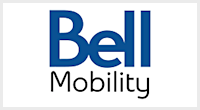
Though it's still a ways off, 6G will be the next generation of wireless technology—like how 5G is the fifth generation. But right now, 6G doesn’t actually exist, and we still have many years before we will begin to see it roll out. It’s still in the development and research phase, so it won’t be available for years. But when it comes, expect 6G to contribute to huge technological advancements, such as self-driving cars and remote surgery.
In this guide, we'll explain what 6G is, when we can expect it to roll out, and the difference between 5G and 6G.
What Is 6G?
After 5G, which is the current fastest and highest-performing wireless standard, 6G will be the next generation of wireless internet connectivity. This technology will likely have lightning-fast speeds that blow 5G out of the water, lower latency, and much greater network capacity.
6G vs. 5G: What’s the Difference?
The main differences between 5G and 6G are related to speed, latency, and network capacity (bandwidth).
When it comes to data speeds, 6G is expected to reach speeds of up to 1,000Gbps. Right now, 5G has theoretical speeds of about 20Gbps, though practically, most people see speeds between 1Gbps and 10Gbps. That difference is tremendous, and 6G connectivity is expected to revolutionize nearly every aspect of our daily lives.
Moreover, 6G is expected to have a far lower latency than 5G. Latency, sometimes called lag or ping, refers to the time it takes for information to travel from one point on the network to another. You can think of it as the delay that occurs when trying to do something over the internet.
Low latency is especially important to online gamers, who rely on low ping for smooth gameplay. However, low latency is helpful for everything, such as audio and video streaming, downloading content, and video conferencing.
Another major difference between 5G and 6G is that 6G will have greater network capacity or bandwidth, which will allow for more people to use the network at one time without getting congested and deprioritizing or throttling data speeds.
How Fast Is 6G?
Although we can’t be sure just how fast 6G will be since it’s still in the research phase, we can assume it will be significantly faster than 5G. 6G may even reach speeds of up to 1Tbps (1,000Gbps). That means 6G technology will theoretically be up to 50 times faster than 5G, which is already pretty darn fast.
And it won’t just be unbelievably fast—6G will also have a much lower ping or latency than 5G. Latency refers to the delay that occurs when information travels from one location to another.
Is 6G Available in Canada?
No, 6G isn’t currently available in Canada or anywhere else. It’s still in a relatively early research phase and will require many more years of development before rollouts begin.
When Will 6G Technology Begin to Roll Out?
Although the 6G wireless rollout hasn’t been confirmed yet, experts expect it to launch around 2030. In the meantime, the 5G rollout is still in progress in various parts of the world. Once 5G networks are more widely available, then the attention may shift toward researching and developing 6G.
It’s certainly going to be a while before we see the likes of 6G, so if you were eyeing a certain 5G smartphone, like the Samsung Galaxy S23, iPhone 14 Pro, or the Google Pixel 7 Pro, you don’t have to worry about it becoming obsolete.
Implications of 6G Connectivity
Theoretically, 6G could bring a lot of technological advances and changes that would otherwise be impossible, such as virtual reality, augmented reality, real-time holographic communication, smart city infrastructure, fully autonomous cars, remote surgery, real-time 4D maps, and significant advancements in AI.
Holographic communication will revolutionize communication, interior design, architecture, telemedicine, and gaming, enabling us to feel as if we are in the very room with people all over Canada and around the world. Because 6G is forecasted to have exceptional potential power efficiency, it may help with sustainability by providing scientists with input from cities, oceans, forests, and homes.
With the rollout of 6G, we will also see improved network security and privacy, protecting us against data breaches and cyber-attacks. Moreover, 6G may bring high-speed connectivity to people in remote areas that had previously only been able to get satellite internet. That alone could help narrow the digital divide and increase access to education, healthcare, and beyond.
5G Phone Plans in Canada
The sixth generation of wireless technology might still be some years off, but 5G has a lot to offer in the interim. Many carriers offer 5G cell phone plans, including the Big Three—Rogers, Bell, and Telus. However, smaller carriers have 5G networks as well, including Eastlink, Sasktel, and Videotron. Check out the most popular 5G plans in Canada below.
6G: Frequently Asked Questions
6G differs significantly from 5G. First of all, 5G exists, and 6G is just an idea at this point. Experts expect 6G will have data speeds up to 50 times faster—maybe even more—than 5G, lower ping or latency, and greater network capacity. These improvements have the potential to transform the way we live, from smart homes and virtual reality applications to autonomous vehicles.
As of 2023, no country has 6G wireless access—many places still don’t have access to 5G and still rely on 3G and 4G.
It’s just an estimate, but 6G isn’t expected to deploy until around 2030. It is still in the early research and development phase, but once 5G has been deployed worldwide, researchers can turn their attention to 6G. However, the exact date of commercial 6G use will largely depend on funding and regulatory guidelines.
Related Articles
Find Better Phones and Plans
Hundreds of cell phone plans unpacked. All the facts. No surprises.

















































